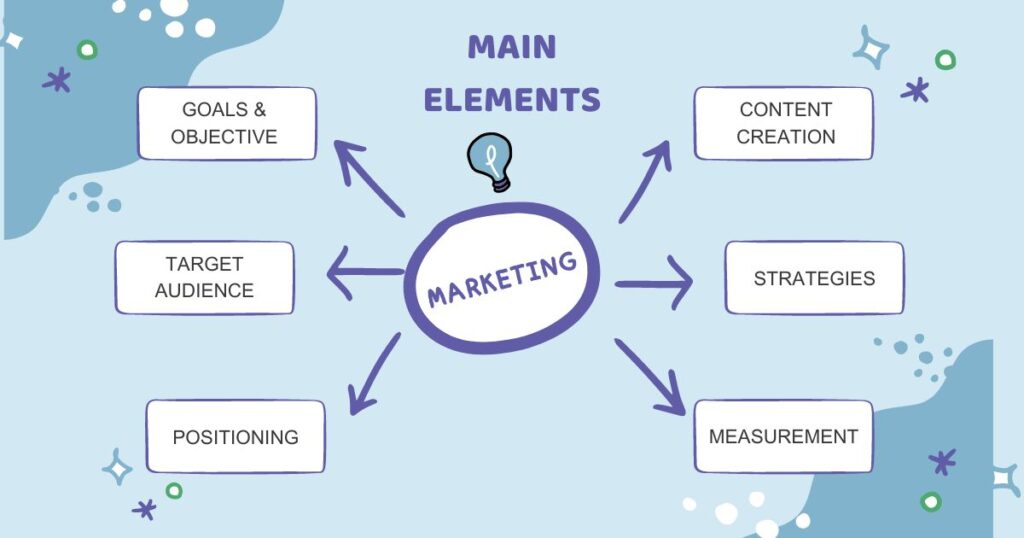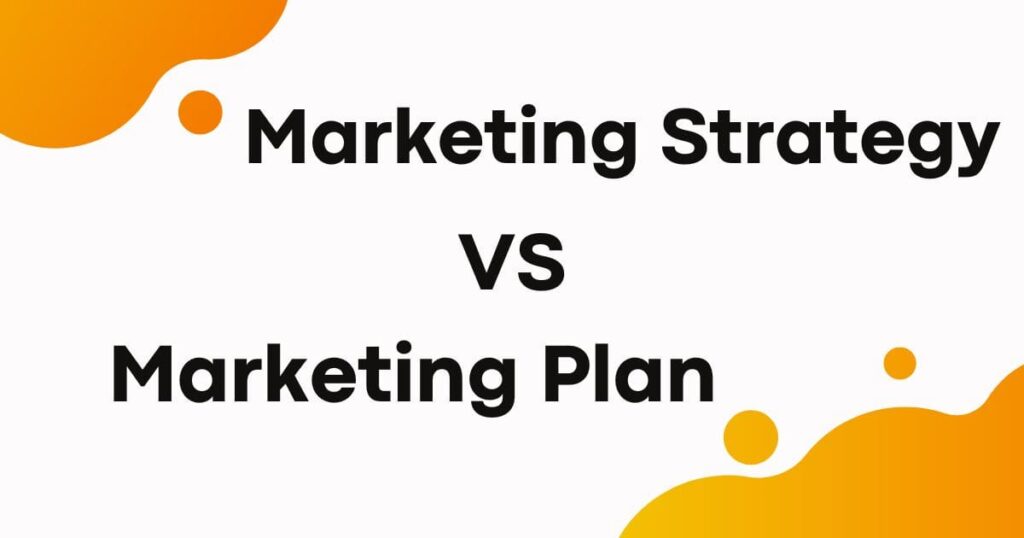Developing a compelling marketing strategy is essential for any business aiming to establish a strong market position and achieve sustainable growth. A robust strategy incorporates market research, competitive analysis, and understands customer behavior to create targeted campaigns. It aligns with business goals, leveraging a mix of traditional and digital media channels to build brand awareness and drive sales.
Clarity in marketing objectives and adaptability to market changes are vital for its execution. Continuous assessment ensures the strategy remains effective in an evolving marketplace. Concise, goal-oriented planning positions a brand to thrive amid competition and connect with consumers effectively.

What Is A Marketing Strategy?
A marketing strategy is an organization’s comprehensive game plan for reaching potential consumers and turning them into customers of their products or services. It outlines actionable tactics and measures success against set business objectives, ensuring a competitive stance in the marketplace.
Sure thing! Let’s dive right into understanding the essence of a marketing strategy and how it can pivot any business to success.
A marketing strategy is a comprehensive plan formulated by businesses to reach and convert leads into customers. This strategy revolves around the company’s value proposition, key brand messaging, data on target customer demographics, and other high-level elements. The ultimate aim is to establish a sustainable competitive advantage and increase market share.
Components Of A Successful Marketing Strategy
Before you can implement a winning strategy, it’s essential to recognize its core components:
- Target Market: This represents the specific group of consumers you aim to reach. Identifying your target market helps tailor your marketing efforts to meet their unique needs and preferences.
- Marketing Mix: Often referred to as the four Ps—product, price, place, promotion. These elements work synergistically to market your brand effectively.
- Budget: Allocating funds strategically across various marketing channels ensures efficient use of resources for maximum impact.
- Goals and Evaluations: Setting clear, measurable goals helps track progress and recalibrate tactics. Periodic evaluations also identify what’s working and what needs tweaking.
The Role Of Research In Shaping A Marketing Strategy
In order to craft a marketing strategy that resonates with your audience, thorough research is non-negotiable. This includes:
- Market Research: Conducting market research sheds light on the economic landscape, competitors, and prevalent consumer behaviors.
- Customer Feedback: Listening to feedback from current and potential customers provides invaluable insights into their experiences and expectations.
- Trend Analysis: Keeping tabs on industry trends allows you to adapt and innovate, keeping your strategy relevant over time.
Aligning Your Strategy With Brand Values
Your marketing plan should not only aim at selling products but also at communicating your brand’s core values. These values are the heartbeat of your brand and resonating with them can create a loyal customer base.
- Brand Message: This is the essence of your brand communicated through marketing initiatives. It should be distinct and consistent to make a lasting impression.
- Customer Experience: Every touchpoint a customer has with your brand should reflect your values, enhancing their overall experience.
- Storytelling: Leveraging the power of storytelling can engage customers emotionally and foster a stronger connection with your brand.
Utilizing Technologies To Optimize Your Marketing Strategy
Technological advancements have revolutionized the way marketing strategies are developed and executed:
- Digital Platforms: They offer unprecedented access to a wider audience and invaluable metrics to measure success.
- Automation Tools: These tools streamline marketing processes, boost efficiency, and free up time for strategic thinking.
- Data Analytics: Harnessing data analytics empowers businesses to make informed decisions and personalize marketing efforts for better results.
Remember, a truly successful marketing strategy is dynamic, adaptable, and aligned with your business goals and values. It should communicate a clear narrative to your target audience, engage them with your brand, and ultimately lead to growth and long-lasting customer relationships.
Advantages Of A Marketing Strategy
A robust marketing strategy streamlines the process of reaching target audiences effectively, enhancing brand visibility and credibility. By defining clear objectives and utilizing data-driven techniques, businesses can achieve a competitive edge and drive sustainable growth.
Crafting an efficient marketing strategy can be the game-changer your business needs, setting it apart in today’s competitive market. It isn’t just a road map for your marketing team; it’s a detailed guide that gives your business direction toward achieving its most ambitious goals and a high return on investment.
Clear Focus And Direction
A comprehensive marketing strategy offers the clarity that can drive a business toward success. It outlines the company’s value proposition, target customer demographics, and tactics to reach potential clients, ensuring every marketing effort aligns with the overall business objectives. By setting out clear goals, it guides decision-making processes, preventing costly detours and maintaining a steady course toward growth and profitability.
Streamlined Communication
- Consistent brand message: A marketing strategy ensures that all promotional materials present a uniform message about the company, reinforcing brand identity and customer loyalty.
- Effective targeting: Strategies help tailor communication to speak directly to the desired audience, increasing engagement and conversion rates.
In today’s digital world, an effective strategy plays a central role in how a brand communicates with its audience. It assures that messages are not just scattered but are strategically designed to reach the right people with the right content at the right time.
Optimized Budget Allocation
Understanding where to invest your marketing budget is crucial for any business. A methodically designed marketing strategy helps:
- Prioritize channels: It identifies the most profitable marketing channels and allocates funds efficiently, ensuring a greater return on investment.
- Cut unnecessary costs: By tracking performance, businesses can eliminate ineffective methods, preventing wastage of resources.
Budget allocation is about making smart choices. A solid strategy helps businesses to spend smarter rather than spending more, delivering more impact per dollar spent.
Enhanced Customer Understanding
At the heart of an effective marketing strategy lies deep customer insight. It means knowing who your customers are, what they want, and how they want it delivered. These insights drive the development of products and services that truly meet customer demands, resulting in:
- Stronger customer connections: A strategy built around customer insight fosters deeper relationships, leading to increased customer retention.
- Better product development: By understanding customer needs, companies can create offerings that are more likely to succeed in the market.
Customer understanding is like possessing a roadmap to your customer’s heart. The better you navigate it, the more likely you are to create lasting customer relationships.
Data-driven Decision Making
Utilizing data analytics is instrumental in honing your marketing tactics. With a marketing strategy that leans on factual insights:
- Performance tracking becomes straightforward: It allows for measurement against key performance indicators and objectives.
- Informed decision-making can be done: Real-time data helps in adjusting strategies promptly to capture market opportunities or correct course.
In the world of marketing, data is your compass. It points you in the direction you need to go, and a good marketing strategy ensures that you follow a path informed by clear, actionable data.
The Main Elements Of A Marketing Strategy
A marketing strategy hinges on understanding target audiences and setting clear objectives. It incorporates the blend of key components such as market research, positioning, and tactical outreach initiatives, ensuring a company’s promotional efforts align with its overarching business goals.
Crafting an effective marketing strategy is akin to painting a masterpiece; every stroke matters, and each element plays a pivotal role in the bigger picture. This strategy serves as a compass for businesses, guiding their promotional efforts to connect with the right audience, convey a compelling message, and ultimately convert interest into sales.

Understanding Your Target Audience
Before diving into promotional tactics, it’s crucial to have a deep understanding of whom you’re trying to reach:
- Demographics: This covers age, gender, income levels, and education.
- Psychographics: Dig into your audience’s lifestyle, values, and interests.
- Behavior: Analyze purchasing patterns, brand interactions, and service preferences.
Igniting a connection with your target audience is the cornerstone of any marketing endeavor. By aligning your strategy with their needs and desires, you’re more likely to strike a chord and inspire loyalty.
Setting Clear Objectives
Every marketing strategy needs clear, measurable goals. Without them, you’re navigating without a map. Aim to establish objectives that are:
- Specific: Clearly define what you hope to accomplish.
- Measurable: Set criteria to track progress and success.
- Attainable: Ensure that your goals are within reach and realistic.
It’s through these benchmarks that a business can gauge its marketing efforts and pivot accordingly, always striving toward growth and improvement.
Analyzing Competitors
A comprehensive analysis of your competitors sheds light on industry benchmarks and reveals opportunities for differentiation. Consider these aspects:
- Market Position: Where do your rivals stand in the eyes of consumers?
- Pricing Strategy: How do their prices compare to yours?
- Brand Perception: Uncover how customers perceive your competitors’ brands.
Standing out in a crowded market often entails learning from your rivals’ successes and missteps, then crafting a strategy that highlights your unique value proposition.
Choosing Appropriate Channels
Selection of marketing channels is less about spreading yourself thin and more about selective targeting:
- Digital Presence: Choose the platforms where your audience is most active online.
- Traditional Media: Identify if TV, radio, or print could effectively carry your message.
- Events and Sponsorships: Determine if participating in trade shows, community events, or sponsorship deals aligns with your strategy.
The choice of channels should harmonize with your audience’s habits, ensuring your message resonates and reaches them on their preferred turf.
Crafting A Unique Selling Proposition (USP)
Your USP is your battle cry; it’s what sets you apart from the noise:
- Distinctiveness: Pinpoint what makes your product or service unlike any other.
- Relevance: Ensure that your USP addresses a need or desire of your target audience.
It’s your USP that can tip the scales in your favor, persuading customers to flock to you rather than the competition.
Allocating Resources Wisely
Smart resource allocation amplifies your strategy’s effectiveness:
- Budget: Distribute your funds in a way that maximizes ROI.
- Time: Devote attention to campaigns and actions that bear the most fruit.
- Workforce: Deploy your team’s talents where they can make the biggest impact.
By administering your resources prudently, you’re poised to reap the rewards of your marketing strategy without squandering precious assets.
Monitoring And Adjusting
A marketing strategy is a living entity, requiring constant nurturing and readjustment:
- KPIs: Select key performance indicators that reflect your objectives.
- Analysis: Continuously review campaigns to identify areas for improvement.
Adaptability is the hallmark of a robust marketing strategy. In an ever-evolving business landscape, the willingness to recalibrate your approach can sustain your edge over competition.

Marketing Strategy Vs. Marketing Plan
Marketing strategy serves as the compass for a brand’s growth, delineating the competitive landscape and customer insights. A marketing plan, on the other hand, is the roadmap that specifies the actions required to achieve the objectives set by the strategy.
Both components are essential for driving a business towards success.
Crafting a robust marketing strategy and delineating a clear-cut marketing plan are critical elements for business success. While they may sound synonymous, their roles and functions within a company are distinct yet interlinked. Understanding this relationship is essential for steering your marketing efforts in the right direction and achieving your business goals.
Defining A Marketing Strategy
A marketing strategy can be envisioned as the compass that guides a business towards its ultimate marketing objectives. It’s the foundation that spells out:
- Target audience: Detailing who the business aims to reach and influence.
- Value proposition: Articulating the unique benefits and advantages offered.
- Core brand messaging: Conveying the essence of what the business stands for.
- Long-term goals: Outlining the overarching results the business strives to achieve.
This strategy serves as the backdrop against which all marketing plans unfold.
Components Of A Marketing Plan
When plotting a marketing plan, think of it as the roadmap that transitions a marketing strategy from vision to reality. It’s grounded in pragmatism and is comprised of actionable steps:
- Specific strategies and tactics: Listing the actual methods used to reach marketing goals.
- Timeframes and milestones: Establishing when actions will be executed and benchmarks will be assessed.
- Budget: Allocating financial resources towards various marketing activities.
- Measurement and tracking: Setting up systems to monitor performance and adjust tactics as necessary.
In essence, while the marketing strategy offers the ‘why’ and ‘what,’ the marketing plan addresses the ‘how,’ ‘when,’ and ‘how much. ’ Together, they form a cohesive framework that can propel a business forward with intention and precision. By balancing thoughtful strategy with a methodical plan, a business can navigate the marketing landscape with confidence and clarity, ensuring that every move is a step towards growth and success.
Types Of Marketing Strategy
Exploring various marketing strategies uncovers a plethora of approaches such as content marketing, SEO, and influencer collaborations. Each strategy is designed to target specific audiences and achieve unique business goals, ranging from brand awareness to sales conversion.
Crafting an effective marketing strategy is akin to navigating a ship through the open sea. Precision in your approach and an understanding of the various routes available are crucial to reaching your desired destination, which, in this context, means achieving your business goals.
With the vast ocean of marketing tactics before you, let’s chart a course through some of the most prominent types of marketing strategies used today.
Digital Marketing
In today’s world, where the internet is as omnipresent as the air we breathe, digital marketing becomes a key player in shaping the consumer’s journey. It’s a broad umbrella that encapsulates:
- Search Engine Optimization (SEO): Enhancing your online presence to rank higher on search engine results pages and draw in organic traffic.
- Content Marketing: Producing valuable content designed to entice and engage your audience, establishing trust and brand authority.
- Social Media Marketing: Leveraging social platforms to connect with your audience, building your brand, increasing sales, and driving website traffic.
Digital marketing’s core lies in its ability to adapt and evolve with the changing digital landscape—keeping businesses in step with the latest online trends.
Outbound Marketing
Outbound marketing represents the more traditional form of marketing where the message is broadcasted outward toward the audience. Consider this a megaphone approach, where businesses shout out their message hoping it will be heard. It includes tactics such as:
- Television and radio ads: The classic mass-media approach to reach a wide audience.
- Print advertisements: Physical ads in newspapers, magazines, brochures, and flyers.
- Cold calling: The direct approach of calling potential customers to introduce them to your product or service.
While some may view outbound marketing as intrusive, it still holds its ground by offering broad reach and familiarity.
Inbound Marketing
In stark contrast to the megaphone is the magnet approach of inbound marketing, which is about creating valuable experiences that have a positive impact on people and your business. It involves drawing customers in rather than seeking them out and typically includes:
- Attraction: Using content and engagement to draw in potential customers.
- Engagement: Providing insights and solutions that align with their pain points and goals, encouraging them to keep coming back for more.
- Delight: Offering continued support and empowerment, turning customers into brand advocates.
Inbound marketing is a strategy designed to attract customers through content and interactions that are helpful and not disruptive.
Relationship Marketing
At its core, relationship marketing focuses on long-term engagement and customer loyalty rather than short-term goals like customer acquisition and individual sales. This strategy is all about:
- Building connections: Proactively creating and nurturing relationships with customers.
- Customer retention: Deploying tactics to keep customers happy and engaged, thus increasing the likelihood of repeat business.
Relationship marketing thrives on the ideology that customers who have a strong bond with a business are more likely to be repeat shoppers and spread the word to others.
Guerrilla Marketing
Conventional strategies not cutting it? Guerrilla marketing swoops in as the surprise element in the marketing playbook. It’s characterized by being:
- Innovative: Thinking outside the box to create buzzworthy, viral campaigns.
- Cost-effective: Achieving goals without the need for a hefty budget, making it ideal for small businesses and startups.
Guerrilla marketing grabs attention in unexpected ways, creating memorable experiences that resonate with the audience on a personal level.
Embark on a journey with these diverse strategies, and you’ll likely discover the route that best aligns with your business objectives. Keep your compass set on engagement and authenticity, and your brand will be well on its way to claiming its rightful place in the bustling market.

5 Best Marketing Strategies
Discover the five most effective marketing strategies that can propel any business to success. Harness the power of social media campaigns, content marketing, SEO, influencer partnerships, and email marketing to amplify your brand’s reach and engage with your audience. Each tactic offers a unique avenue to foster growth and increase market presence.
In the world of marketing, staying ahead means embracing strategies that resonate with your audience and outshine your competitors. It’s a game of wits, creativity, and strategic planning. Let’s plunge into some of the best strategies that can elevate your marketing game to new heights.
Content Marketing
Content is undeniably the king in the marketing domain, and its reign is far from over. By sharing valuable, relevant content, brands establish themselves as thought leaders, thus gaining the trust of their audience. This approach is not just about pushing out content; it’s about crafting material that informs, entertains, and educates, leading to higher engagement and conversion rates.
Influencer Collaboration
- Partnership dynamics: Collaborating with influencers who resonate with your brand values helps tap into their engaged followers and can bring authenticity to your marketing efforts.
- Trust equation: Since influencers have a rapport with their audience, their recommendations often carry more weight, translating into higher credibility for your brand.
SEO Optimization
Optimizing your online content for search engines is a master stroke for visibility. By focusing on keywords, meta descriptions, and quality content, you elevate your brand’s online presence, making it easier for potential customers to find you in the vast digital ocean.
Constant updates to algorithms require brands to stay agile with their SEO strategies.
Social Media Marketing
- Platform selection: Different social platforms attract specific demographics. Identifying the best platforms for your brand ensures that your marketing efforts reach the right audience.
- Content variety: Incorporating a mix of images, videos, and live interactions keeps your social media vibrant and engaging, prompting users to stick around and even share your content.
Email Personalization
Sending out generic emails is passé; the future lies in personalization. Crafting emails that address the recipient’s interests, past behavior, and preferences show that your brand values their unique needs. This effort to customize content greatly increases the chances of your emails being opened, read, and acted upon.
Embracing these strategic pillars can fundamentally shift how your brand connects with its audience. By investing in these marketing strategies, you’re not just selling a product or service; you’re delivering an experience that has the potential to create lifelong customers and advocates for your brand.

How To Create A Successful Marketing Strategy
Crafting a successful marketing strategy hinges on understanding your audience and setting clear goals. Use data to drive decisions and iteratively refine tactics, ensuring adaptive and targeted outreach.
A marketing strategy is the backbone of any successful business endeavor. Without a clear-cut plan, reaching your target audience and actualizing your business goals might as well be a shot in the dark. Let’s delve into the essence of crafting a marketing strategy that not only speaks to your audience but also catapults your brand to the forefront of your industry.
Understanding Your Audience
The first step in creating a marketing plan that hits the mark is getting to know your potential customers inside and out. Think of it as setting up a coffee date with your audience to learn about their likes, dislikes, and everything in between.
Here’s what you need to focus on:
- Demographics and psychographics: These are the statistical and psychological aspects of your audience, respectively. Identifying these helps tailor your marketing campaigns to resonate with the right people.
- Pain points: Knowing your audience’s challenges allows you to position your product or service as the solution they’ve been searching for.
- Communication channels: Discover where your audience hangs out. Is it on social media, forums, or traditional media? This knowledge helps you connect with them more effectively.
Setting Clear Objectives
Once you have a deep understanding of your audience, you’re ready to establish clear objectives that lead to measurable outcomes. Crafting great marketing goals involves more than just saying you want to increase sales. Here’s what constitutes a strong objective:
- Specificity: Your goals need to be precise. Vague objectives can lead to misdirected efforts and diluted results.
- Measurability: If you can’t measure it, you can’t manage it. Set goals with quantifiable indicators to track progress.
- Relevance: Ensure your objectives align with your broader business goals. This cohesion ensures that every effort pushes the company in the desired direction.
Analyzing The Competition
No company is an island, and knowing what others in your space are doing can provide you with a competitive edge. Think of it like a chess game; to outmaneuver your opponent, you must first understand their moves. Critical aspects to analyze include:
- Their value proposition: Pinpoint what makes competitors appealing to their customers, and look for areas where you can differentiate your offering.
- Market positioning: Identify where competitors stand in the minds of consumers and find gaps that your brand can fill.
- Promotional tactics: Take note of the marketing strategies that seem to work for your rivals and consider how you can apply similar tactics more effectively or introduce innovative alternatives.
Choosing The Right Marketing Channels
Not all marketing channels are created equal, and selecting the right ones is like choosing the best tools for a job. To connect with your audience where they are most receptive, consider the following:
- Their preferred platforms: Does your audience scroll through Instagram, or do they prefer reading lengthy blog posts? Choose channels based on their habits.
- Your budget: Some channels require a heftier financial commitment than others. Ensure your choices are financially sustainable.
- Content format: Different channels favor different types of content. Video might work well on one platform, while text might be king on another.
Crafting Compelling Content
Content is the crux of digital marketing and the vehicle through which you engage your audience. To captivate your potential customers, your content should:
- Solve problems: The best content addresses your audience’s most pressing issues and offers tangible solutions.
- Evoke emotion: Whether it’s humor, empathy, or excitement, content that sparks an emotional response is more likely to be remembered and shared.
- Be value-driven: Each piece of content should offer something beneficial, whether it’s knowledge, entertainment, or inspiration.
Tracking And Optimizing Performance
After initiating your strategy, it’s not time to kick back and relax. Marketing is an iterative process that thrives on continuous improvement. Here’s how to keep your strategy sharp:
- Use analytics tools: These are your eyes and ears on the digital landscape. They’ll help you understand what’s working and what’s not.
- A/B testing: By testing different versions of your content or ads, you’ll gain real insights into preferences and behaviors.
- Adapting to feedback: Listening to your audience’s responses and adapting accordingly ensures your marketing remains effective and relevant.
By adhering to these strategies and remaining adaptable to the ever-evolving digital space, you’re well on your way to creating a marketing strategy that not only meets but exceeds expectations. Remember, in the world of marketing, stagnation is the enemy and innovation is your ally.
Keep refining your strategy, and you’ll keep reaping the rewards.
Why Is Having A Marketing Strategy Important?
A robust marketing strategy sets the stage for business success by aligning advertising efforts with company goals. Understanding target audiences and competitive landscapes enables businesses to effectively allocate resources and maximize ROI.
Navigating the competitive landscape of business is akin to charting a course through uncharted waters. A comprehensive marketing strategy serves as a lighthouse, guiding enterprises toward success and keeping them secure amidst potential pitfalls. Let’s delve into why a meticulously crafted marketing strategy is indispensable for any business aiming to thrive in today’s dynamic market environment.
Aligns Business Goals With Market Needs
A marketing strategy forms the bridge between a company’s objectives and the demands of the marketplace. It crystallizes how a business will fulfill customer needs better than competitors while achieving its own growth targets. By aligning products or services with market requirements, companies can ensure relevance and foster sustained growth.
Steers Resource Allocation
- Smart budgeting: A structured marketing strategy enables firms to allocate their budgets effectively, ensuring the best return on investment in marketing initiatives.
- Focuses efforts: It highlights which platforms and tactics will likely yield the highest engagement and conversion rates, eliminating guesswork and misused resources.
- Adapts to business size: Whether a startup or a multinational, a marketing strategy tailors activities to the scale of operations, ensuring that every dollar spent contributes to the broader business goals.
Drives Consistent Messaging
Presenting a uniform brand message across various platforms solidifies brand identity and builds consumer trust. A cohesive marketing strategy ensures all communications reinforce the core message, creating a strong, recognizable brand.
Identifies And Targets Ideal Customers
- Customer insights: Real-time data and analytics underpin a savvy marketing strategy, allowing businesses to understand their target audience’s preferences and behaviors.
- Personalization: Tailoring marketing efforts to address the specific needs and desires of the intended audience enhances customer satisfaction and loyalty.
- Competitive edge: By targeting the ideal customer segment more effectively than rivals, businesses can carve out a unique space in the market.
Measures Success And Provides Flexibility
A well-conceived marketing strategy sets clear metrics for success and includes mechanisms for tracking progress. This permits businesses to pivot swiftly in response to market feedback, maintaining a competitive stance.
- Trackable metrics: It articulates specific, quantifiable goals, enabling companies to measure the efficacy of their marketing endeavors.
- Reflective iterations: Businesses can refine their tactics based on performance data, ensuring that their marketing campaigns are responsive to real-world results rather than conjectures.
Understanding the critical role of a marketing strategy can transform the way businesses approach their market efforts. It’s the blueprint for not only surviving but also prospering in the ever-evolving marketplace. Deploying a solid marketing strategy is fundamental to connecting with customers, differentiating from the competition, and driving sustainable business growth.
Frequently Asked Questions On Marketing Strategy
What Is A Marketing Strategy?
A marketing strategy is a business’s overall game plan for reaching prospective consumers and turning them into customers of the products or services that the business provides.
How To Develop An Effective Marketing Strategy?
Developing an effective marketing strategy involves identifying your target audience, setting clear objectives, analyzing competitors, and selecting the appropriate marketing mix to reach your goals.
What Are The Components Of A Marketing Strategy?
The components of a marketing strategy typically include a detailed market analysis, a value proposition, key brand messaging, data on target customer demographics, and strategic planning for marketing channels and budget allocation.
Why Is Digital Marketing Crucial Today?
Digital marketing is crucial due to the vast number of consumers who use the internet to make purchasing decisions, offering cost-effective, measurable, and personalized ways to engage audiences.
Conclusion
Crafting an effective marketing strategy unlocks your brand’s potential. Remember, staying adaptable and data-informed propels success. Connect with your audience; their feedback shapes the future. Strive for authenticity and creativity—these traits resonate. Let’s revolutionize your approach and conquer the market together.